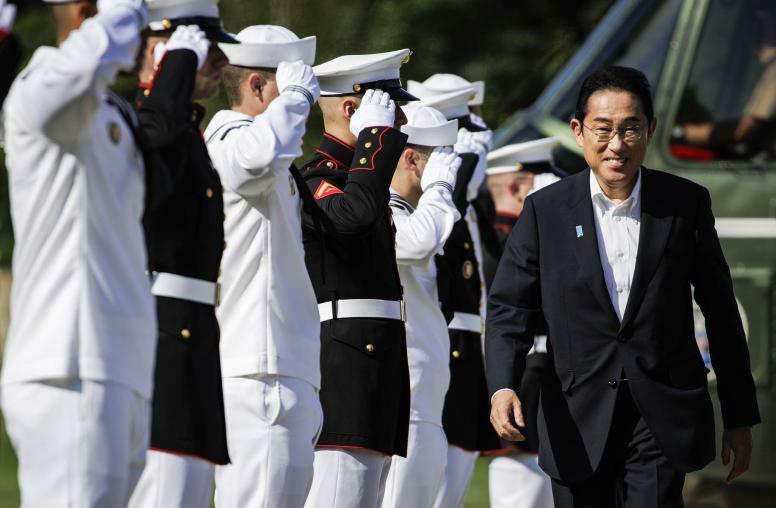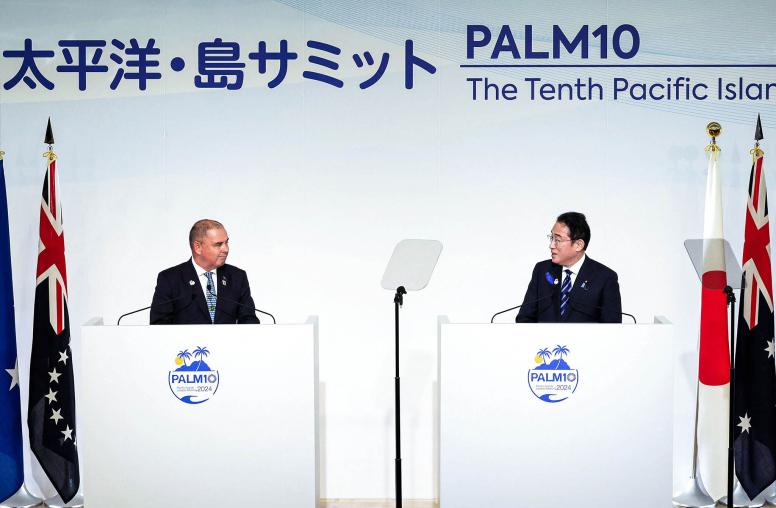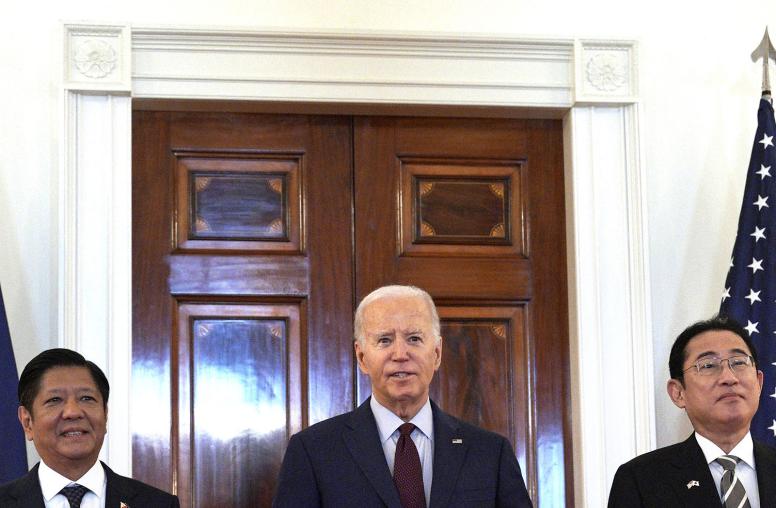Resolution of Korean Forced Labor Claims Must Put Victims at the Center
Past Japan-Korea normalization treaties presaged today’s forced labor dispute, but emphasizing human rights offers a lasting resolution.
In 1965, Japan and South Korea signed numerous treaties and agreements to normalize relations, including the Treaty on Basic Relations reestablishing diplomatic relations and a Claims Agreement settling property claims among the two countries and their nationals. These agreements have failed to resolve bilateral tensions stemming from the claims of Koreans who were subjected to forced labor by Imperial Japan during World War II. Some parties have called for a legal resolution based on the arbitration clause in the Claims Agreement. However, major issues would arise if the two countries pursued arbitration.

The Ambiguity of the Japan-Korea Relationship
The agreements contain critical ambiguities that presaged today’s forced labor dispute. Three issues arising from those ambiguities are notable: (1) the relationship between the two countries prior to South Korea’s independence, (2) the precise exchange made in the process of settling claims and (3) changes in international law and politics.
A major ambiguity in the Treaty on Basic Relations is whether Korea lawfully forfeited its sovereignty to Japan in 1910. During the negotiations for the normalization treaties, Japan argued the annexation of Korea, validated through the 1910 Annexation Treaty, was consistent with prevailing international law. Conversely, South Korea argued annexation was the result of an illegal invasion and the Annexation Treaty was void ab initio. South Korea has also argued that its sovereignty continued through the colonial period through the provisional government, a position memorialized in South Korea’s constitution.
Both arguments have some support in international law. In the time of global imperialism, treaties were often procured through violent coercion without affecting their legitimacy. Nevertheless, some coercion was considered excessive. The Annexation Treaty was preceded by a 1905 treaty that made Korea a protectorate of Japan before Korea’s sovereignty was stripped entirely five years later. Francis Rey, a French scholar contemporary to the 1905 protectorate agreement, wrote that because Japanese diplomats had “physically and mentally harassed the Korean emperor and had failed to obtain his signature to the agreement, they had violated the internationally sanctioned method of concluding treaties,” and the treaty should be considered “null.”
Following Rey’s reasoning, a 1935 League of Nations Draft Convention on the Law of Treaties identified the 1905 agreement as an example of an invalid treaty. In 1963, the United Nations International Law Commission again endorsed the reasoning that the 1905 agreement was invalid. The invalidity of the protectorate agreement arguably made the Annexation Treaty likewise invalid, an argument Japan rejected.
Finding this difference irreconcilable, Japanese and South Korean delegates drafted around it, resulting in a key ambiguity expressed in Article II of the Treaty on Basic Relations: “It is confirmed [emphasis added] that all treaties or agreements concluded between the Empire of Japan and the Empire of Korea on or before August 22, 1910 are already [emphasis added] null and void.” None of the normalization treaties sought to define the relationship between the two countries between 1910 and 1945.
This ambiguity is directly relevant to the forced laborers dispute. In 2007, Japan’s Supreme Court dismissed claims by Korean forced laborers in part because the laborers were conscripted according to a lawful decree by the Imperial Japanese government. The South Korean Supreme Court’s 2012 opinion pointedly disagreed: “Under the Constitution of the Republic of Korea, Imperial Japan’s dominion over the Korean Peninsula during the colonial period is no more than an illegal occupation . . . such that the Japanese court’s holding is in direct conflict with a core value of Korea’s constitution, which sees the conscription during the Japanese colonial era as itself illegal.”
The Exchanges in the Claims Agreement
The vagueness of the character of Imperial Japan’s colonization of Korea led to second-order ambiguities in the construction of the Claims Agreement. Under the agreement, Japan paid $300 million to South Korea, and the “claims between the Contracting Parties” were “settled completely and finally.” But what exactly was the money for, and exactly what claims were settled?
From South Korea’s perspective at the time of the negotiations, Japan’s payment should be considered reparations as Japan illegally annexed Korea. However, since Japan rejected the illegality of colonizing Korea, Japan could not accept characterizing the payment as reparations.
Another difficulty was the treatment of Japan’s claim against South Korea for Japanese property and interests left behind as Imperial Japan left Korea. Article 14 of the 1951 Treaty of San Francisco, which formalized the defeat of Imperial Japan, required Japan to give up all property and interest of Japanese nationals located in the jurisdiction of the Allied powers. However, South Korea’s exclusion from the Treaty of San Francisco left open the possibility that the former colonial master could make claims against the former colony.
To South Korea, even considering Japan’s claims against it was deeply insulting, like a homeowner being sued by a thief who left his crowbar when fleeing. But the Japanese government could not easily drop its claim against South Korea — if it did, it might be exposed to litigation from individual Japanese citizens, who could argue that the Japanese government was now liable since it waived its claims of property left behind in Korea. Indeed, by the time of the Claims Agreement’s negotiation, individual Japanese citizens were bringing such lawsuits against their government based on the Treaty of San Francisco.
Unable to resolve the difference, the two countries again drafted around the disagreement. Terms like “reparation” or “compensation” do not appear in the Claims Agreement, unlike Japan’s post-World War II treaties with other Asian countries like China, Myanmar or Indonesia (all parties to the Treaty of San Francisco). The Japanese delegates repeatedly clarified that Japan’s payment was not reparations. During the negotiations, the Japanese delegation stated that the payment was not reparations, but an economic assistance. Shortly after the Claims Agreement was signed, Japanese Foreign Minister Shiina Etsusaburo reported to Japan’s legislature that the money paid was to “congratulate the beginning of a new nation” and not reparation.
To fend off claims by Japanese individuals, the Japanese government resorted to what one legal scholar termed “interpretative acrobatics.” In the 1956 Horimoto v. Japan case, a Japanese civilian robbed and shot by U.S. soldiers during U.S. occupation sued the Japanese government under the theory that Japan had assumed the liability of the United States because Japan extinguished his claim against the United States through the Treaty of San Francisco. The Japanese government took the position that the treaty did not extinguish the individual’s claim against the U.S. government but rather only waived Japan’s “diplomatic protection” — the assistance that the Japanese government would have given to its citizen pursuing his claim against a foreign government. Until the early 1990s, Japan took a similar position in other claims cases, including in cases where the underlying claims arose during World War II. For decades, Japan applied this stance to the Claims Agreement as well. In 1991, for instance, Foreign Ministry official Yanai Shunji reported to Japan’s legislature that the Claims Agreement only affected diplomatic protection, and claims held by South Korean individuals were unaffected.
South Korea’s position was the opposite. Following the Claims Agreement, the Park Chung-hee dictatorship proceeded as if the funds received included reparations from Japan. In 1971, South Korea’s legislature passed an act that allowed claims of injury or death involving Korean forced laborers to be reported and receive reparations. To be sure, the democratic legitimacy of South Korea’s legislature at the time was dubious, and the payment to the individual victims of forced labor was nominal. Nevertheless, facing its own domestic audience, South Korea’s position directly contradicted the one Japan took with its domestic audience. Indeed, this was the point of deliberately introducing the ambiguity in the Claims Agreement — so that the two governments could go back to their people and tell two different stories.
In the 2000s, this inconsistency became more complicated as the two countries radically switched positions. As South Korea transitioned to democracy in 1987 and its economy grew, Korean individuals became empowered to pursue a sophisticated international litigation campaign that sought to exploit Japan’s position on claims held by individuals. The 2005 declassification of the negotiating records for the normalization treaties provided ammunition for these litigants. A South Korean commission that reviewed the negotiating records concluded that claims held by individuals were not within the scope of the Claims Agreement. Extending this argument, the former forced laborers eventually prevailed in South Korea’s Supreme Court in 2012 and 2018.
Japan also reversed course. Beginning in the mid-1990s, foreign individuals leveraged the Japanese government’s argument that individual claims remained valid and began suing the Japanese government in Japanese courts. By 2001, however, Japan switched its long-standing position to argue that the Treaty of San Francisco and the Claims Agreement in fact extinguished claims held by individuals. Japanese legal scholars have criticized this turnabout. Obata Kaoru, a professor of international law, found that the “diplomatic protection” theory was “established as an accumulation of choices based on expediency” and ultimately “an interpretation that sought to avoid the legal or political responsibility for vindicating individual rights.”
The Evolution of International Law and Politics Since 1965
Changes in international law and politics since 1965 introduce further complications for a potential arbitration process. Although international law prohibits ex post facto application of the law, the evolution of international law often means that a principle that previously existed only in the abstract may gain strength over time. Particularly in disputes involving the legacy of colonialism and human rights violations, an arbitration held today may come to a different conclusion than a hypothetical arbitration held in 1965, shortly after the Claims Agreement was concluded.
Since 1965, international law has evolved toward human rights and dignity, and away from state sovereignty-based arguments that justify the infringement of human rights. As early as 1994, Louis Henkin, a pioneer of international human rights law, declared: “‘sovereignty’ is a mistake, indeed a mistake built upon mistakes,” as he called for a “move from state values to human values.” While sovereignty-based arguments still hold strength in international law, the trend toward universal human rights affects the interpretation of the Claims Agreement.
In 1996, the U.N. special rapporteur found that Imperial Japan’s practice of military sexual slavery violated international law based on the Geneva Conventions of 1929 and 1949. The special rapporteur reached this conclusion even though Japan did not sign the 1929 convention and the 1949 convention came into existence after World War II, finding that “certain aspects of international humanitarian law,” including prohibition of slavery, “are beyond any doubt part of customary international law” such that states may be held responsible for violation of these principles regardless of when or whether they ratified these conventions. The same logic may be applied to Imperial Japan’s use of forced labor, which may be characterized as slave labor.
The emphasis on human rights may also affect the forced laborer case in a more granular manner. Several commentators have noted that international law’s development toward human rights means that the Claims Agreement should not be interpreted in a way that extinguishes individual rights by implication, particularly when the rights arose from tremendous human suffering and, as shown above, the two signatories did not articulate precisely which rights were being settled.
A final consideration is the change in the two countries’ relative international stature. Although this factor is not directly operative in the legal analysis of the Claims Agreement, realpolitik considerations often impact the interpretation and application of international law. Because of South Korea’s robust public diplomacy and pop culture, the suffering of Koreans under Japan’s imperialism is now a part of global consciousness. Under these conditions, Japan’s argument that the laborers’ claims were settled through a treaty negotiated by a dictatorial Korean regime is likely to invite international public disapproval.
The changes in international law and politics mean that we cannot go back to 1965. The forced labor dispute stems from the fact that the relevant treaties papered over fundamental disagreements between Japan and South Korea in hopes of advancing security and economic goals. Maintaining the false quiet over these disagreements ultimately depended on silencing Koreans who suffered at the hands of Imperial Japan. When South Korea’s political and economic growth enabled individual Korean victims to voice their rights, under the auspices of international laws that evolved toward recognizing such voices, the false quiet could no longer be maintained.
A Way Forward
This suggests a way forward, from false quiet to true peace. Whether Japan and South Korea resolve the forced labor issue through arbitration, a new treaty or political agreement, such a resolution must first and foremost be centered on the victims, to compensate their loss and restore their dignity to their satisfaction. A lasting resolution will be possible only if the legal framework addressing the human cost of Japan’s colonialism over Korea is shifted from state values to human values.
Nathan Park is an international litigation lawyer and a nonresident fellow at the Sejong Institute in South Korea.



